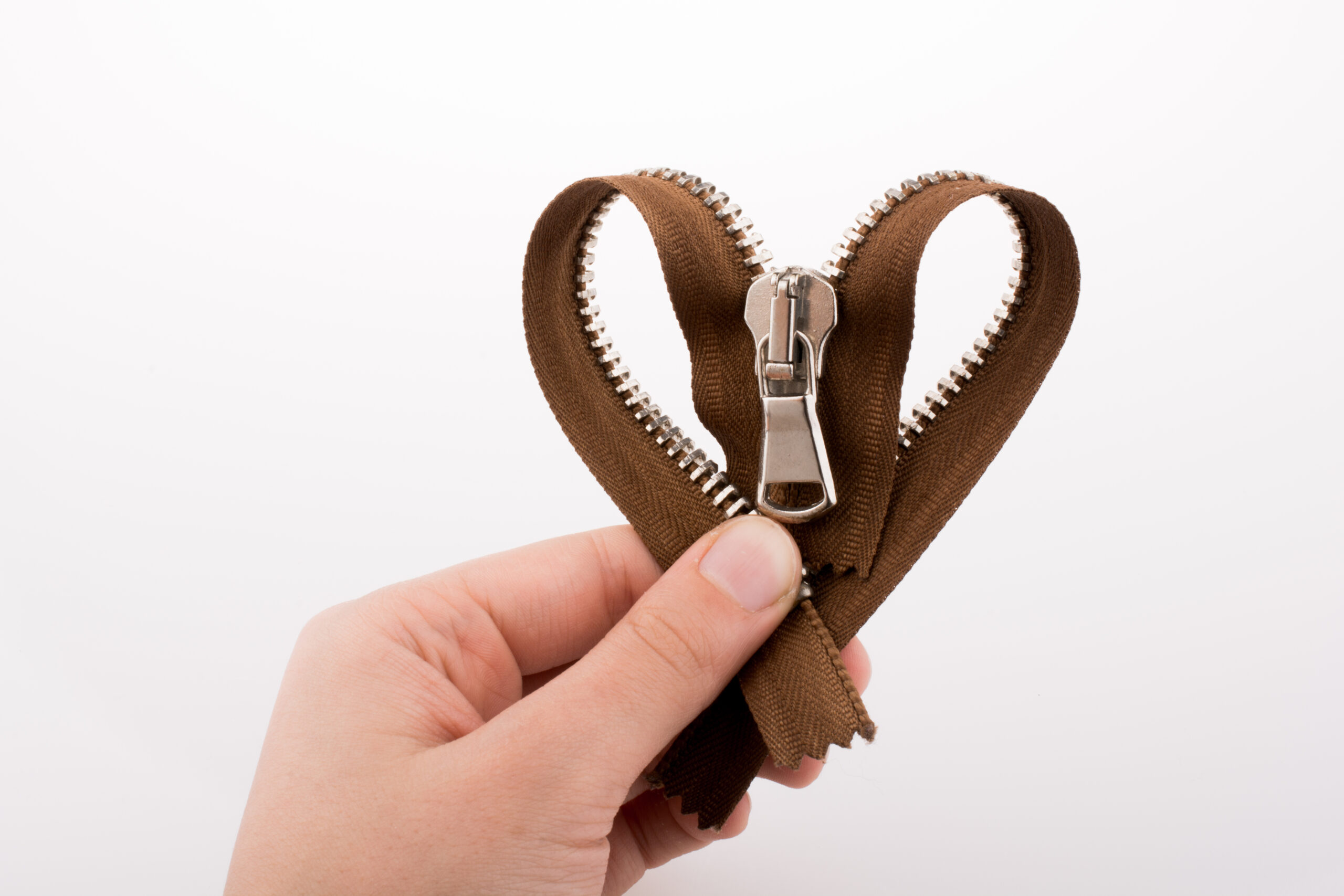To the untrained eye, a zipper might seem like a simple closure. But for product designers, textile engineers, and sourcing managers, zippers are precision-engineered systems built to perform under pressure. They hold tents closed during storms, seal marine covers against salt spray, and provide secure fastening in industrial and protective clothing.
Each zipper that leaves the production floor is defined by numbers — gauge, material, coating, tensile strength, and fatigue rating. Those numbers live on a zipper specification sheet. Reading that document correctly is how OEMs translate design requirements into repeatable performance.
LenZip, a U.S.-based custom zipper manufacturer, produces industrial zippers that meet or exceed ASTM and ISO standards. This guide explains how to interpret a zipper spec sheet, what those measurements mean, and how to ensure your chosen closure meets your product’s needs.
Why Zipper Spec Sheets Matter
Every zipper installed in a finished product must perform predictably. A mismatch in material or tolerance can compromise strength or durability, especially in load-bearing or weather-exposed gear. A proper spec sheet gives you the data needed to prevent those issues.
Three key areas define a professional-grade zipper specification:
Dimensional details outline the physical characteristics such as gauge, chain width, and tape width.
Material information lists the type of polymer or metal and the applied finishes.
Performance results show the zipper’s mechanical strength and testing compliance.
Together, these factors help OEMs identify whether a specific zipper is suitable for light apparel, marine use, or industrial applications.

Comparing Specifications Between Manufacturers
Different zipper factories present similar information using varied formats or terminology. Some list “chain width,” others say “tooth pitch.” Understanding how to compare these is crucial for OEM buyers reviewing multiple vendors.
When you examine a zipper spec sheet, first verify the gauge measurement in millimeters — for example, #5 equals approximately 5 mm. Confirm that the listed testing standards reference current protocols, such as ASTM D2061 for tensile strength or ISO 22774 for fatigue cycles. Also check whether those tests were conducted at standard humidity and temperature, since environmental factors can alter results.
If any data is missing, always request supporting documentation. LenZip’s Zipper Testing Standards and Inside Zipper Testing resources describe each ASTM and ISO method used, allowing you to validate how a particular rating was achieved.
This comparison process is not about one manufacturer versus another — it’s about verifying that you’re comparing identical conditions, sample counts, and test methods.
Understanding Gauge, Chain Type, and Strength Ratings
A zipper’s “gauge” is its most visible specification, referring to the width of the closed chain teeth in millimeters. The gauge number directly correlates to strength and durability: the higher the number, the larger the chain and the greater the load it can bear.
Different chain types add another layer of complexity. Coil zippers, made from wound nylon or polyester filament, offer flexibility and smooth operation for curved seams or soft goods. Molded plastic zippers use individual teeth injection-molded onto the tape, providing durability and corrosion resistance. Metal zippers, often brass, nickel, or stainless steel, deliver maximum rigidity and heat resistance for demanding applications.
By cross-referencing these variables with LenZip’s Zipper Gauge & Chain Size Chart, engineers can confirm whether a #5 coil zipper suits a lightweight gear bag or if a #10 molded tooth version is better for a marine enclosure.
How Material Choice Impacts Performance
The type of material used in a zipper chain and tape affects nearly every performance metric — from flexibility to corrosion resistance.
Nylon provides excellent fatigue resistance and flexibility, ideal for garments or products that flex during use. Polyester, on the other hand, is stiffer but more stable under UV exposure, making it ideal for outdoor and marine products. Polypropylene stands out for its chemical resistance, often used in laboratory environments and protective covers.
When higher strength or heat tolerance is required, metal options like brass and stainless steel are preferred. Brass resists oxidation and provides high tensile strength, while stainless steel endures both heat and salt exposure. LenZip’s Zipper Materials & Finishes program helps OEMs choose materials based on specific environmental or regulatory requirements.
Each tape material also has its own specification — polyester or polypropylene webbing, coating type, and thickness. Selecting the wrong one can affect seam bonding or cause slider misalignment during assembly.

How Testing Standards Define Reliability
No matter how durable a zipper appears, only testing confirms its performance. Spec sheets should always reference mechanical test standards. Common examples include ASTM D2061 for tensile strength, ASTM B117 for corrosion testing, and ISO 22774 for endurance cycles.
During testing, samples are pulled, flexed, and exposed to simulated conditions like humidity and salt spray. A properly documented spec sheet lists both the test standard and the measured result — for example, “Tensile strength: 700 N (ASTM D2061)” or “Corrosion resistance: 96 hours salt spray (ASTM B117).”
At LenZip, testing isn’t a final inspection — it’s integrated into the manufacturing process. Each production lot is verified and traceable to ISO 9001 quality management standards. OEMs receive certifiable performance data with every shipment, providing confidence that their closures meet the same level of reliability from prototype through production.
Gauge, Strength, and Application Examples
A small zipper may look similar to a large one, but their mechanical differences are significant.
A #3 or #5 coil zipper is suited for light-duty use, such as garments, small cases, or decorative applications. These gauges typically handle up to 250 newtons of tensile force.
Stepping up to a #7 zipper increases strength and weather resistance, making it ideal for marine upholstery or moderate industrial gear with forces up to 500 newtons.
#8 and #10 zippers handle heavy loads, often used in tents, tarps, and industrial covers where high pull strength and slider stability are critical.
At the top end, #15 to #20 gauges represent extreme-duty industrial closures, used in modular shelters, inflatables, and automotive covers. These can exceed 1,000 newtons of tensile capacity and are often paired with corrosion-resistant coatings.
Selecting the right gauge early in your design phase prevents premature wear, improves user experience, and reduces the chance of slider or tooth failure over time.
Material Finishes and Surface Treatments
Surface finish is the hidden factor that defines a zipper’s resistance to environmental stress. LenZip’s Zipper Coatings and Finishes cover multiple protective options — from polyurethane film lamination to Teflon® and plasma-bonded coatings. These finishes improve glide, reduce corrosion, and protect tape fibers against UV degradation.
For metal components, finishes like anodized black, nickel plating, or brass tinting are applied not only for aesthetics but to extend service life in moisture-heavy environments. Plastic zippers can also be treated with hydrophobic or anti-static coatings for special-use products.
Each coating type is verified through ASTM B368 accelerated corrosion testing to ensure consistency. When reading a spec sheet, look for a finish code or treatment description and confirm that it matches your product’s performance expectations.
Integrating Zipper Specifications into Product Design
For OEMs, reading a spec sheet is just the start — the next step is incorporating that data into the design process. Dimensions like tape width, slider clearance, and stop length should be modeled directly into CAD drawings. This ensures your product patterns match zipper tolerances before prototyping begins.
In addition, many products combine zippers with heat-sealed or RF-welded seams. Matching zipper tape materials to seam adhesives is critical to avoid delamination. LenZip’s Zipper Engineering 101 resource explains how to select tape and coating combinations compatible with RF welding, marine-grade adhesives, and high-temperature processes.
Once the design is validated, LenZip can produce sample zippers with your specified length, gauge, slider type, and finish for functional testing. OEMs can request these directly through Request a Quote.
Understanding Performance Variability and Quality Assurance
Two zippers with identical dimensions may perform differently if manufacturing tolerances vary. Differences in chain alignment or tape weave can alter tensile strength by up to 10%. Reliable manufacturers control these variances through strict process monitoring.
LenZip uses barcoded lot tracking and ISO 9001-certified processes so OEMs can trace every batch back to its test data. This level of transparency ensures that each production run meets the same specifications outlined in its corresponding sheet.
For customers, this means consistent quality — whether ordering 50 samples or 50,000 bulk units. The documentation also simplifies auditing for sectors like aerospace, marine, or government supply contracts, where compliance is mandatory.
Learn More
Reading a zipper spec sheet isn’t just about memorizing numbers — it’s about understanding how design, material science, and testing come together to create reliable fastening systems. A well-specified zipper will enhance a product’s performance and lifespan, while an under-specified one can lead to costly repairs or failures in the field.
As a trusted U.S. zipper manufacturer, LenZip provides OEM partners with clear, test-backed specifications, engineering collaboration, and fast domestic support. Whether you need an industrial zipper for marine gear, medical textiles, or custom protective enclosures, LenZip ensures every component meets its documented standard.
Discuss your zipper specifications with LenZip’s engineers today at https://lenzip.com/request-a-quote/.
Frequently Asked Questions
- Why does a #5 zipper sometimes measure closer to 5.7 mm?
Minor variations are normal. Thermal expansion, humidity, and material density can affect width slightly. LenZip maintains ±5% dimensional tolerance under ASTM D2061 guidelines. - How can I verify that a zipper meets marine or UV standards?
Review the spec sheet for ASTM B117 (salt-spray test) and UV exposure ratings. You can also refer to LenZip’s Zipper Materials & Finishes for marine-grade coating details. - Can two zippers share the same gauge but perform differently?
Yes. Gauge only defines chain width — materials, coatings, and slider design determine overall performance. - What should I confirm before moving from prototype to production?
Ensure tensile strength, coating, and slider compatibility are verified. Compare data against LenZip’s Zipper Gauge Chart. - How does LenZip help OEMs interpret specs?
LenZip’s engineers provide tailored assistance, including drawings, test results, and performance comparisons — available through Request a Quote.
